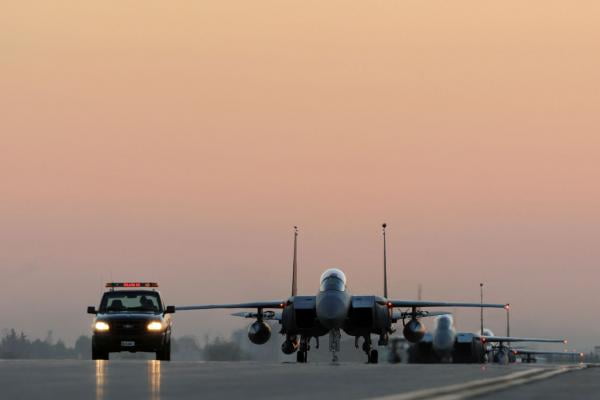
As the U.S. Senate prepares to take up its version of the Fiscal 2017 National Defense Authorization Act in the coming weeks, gaps exist between White House and Congressional proposals for ship and aircraft building, as well as for the future organization of the Defense Department.
Neither the Senate bill, still to be voted on, nor the House bill, passed this month, give the Pentagon the full $582.7 billion in base and overseas war funding it requested earlier this year.
The Senate version offers a similar ballpark overseas contingency budget, $58.6 billion to the Pentagon’s $58.8 bilion request.
But the House bill proposes moving about $16 billion from the overseas contingency fund to base funding, a move that prompted a veto threat from the White House earlier this month.
In an age when fiscal responsibility and efficiency are talking points for all sides, the Senate bill proposes eliminating the Undersecretary of Defense for Acquisition, Technology and Logistics position, instead dividing its duties among a new research and engineering office, as well as a management and support undersecretary office, the Appropriations Committee said this month.
As the Pentagon faces a variety of threats around the world, the five-undersecretary array continues to reflect a Cold War-era mindset, the committee states.
The House bill also would require the next president to submit a supplemental budget request in April 2017.
On the shipbuilding side, both the House and Senate bills overshoot the Navy’s requested new ships for Fiscal 2017.
The Navy’s request for seven ships included two Arleigh Burke-class destroyers, two Virginia-class submarines, two littoral combat ships and one America-class amphibious assault ship, moves that would go toward the fleet reaching 308 ships by Fiscal 2021.
The House bill budgets for 15 new Navy ships, while the Senate’s proposed budget offers 10 new ships.
All three proposals also fund the replacement program for the Ohio-class nuclear boats.
In the air, the Senate and Pentagon proposals both provided for 63 F-35 aircraft, while the House bill calls for 74.
The House bill authorizes $1.8 billion to procure 11 Navy P8-A Poseidon aircraft, while the Senate proposes the same number of aircraft for $2.2 billion.
While the Senate bill authorizes $2.6 billion for 52 Army Apache, 22 Chinook and 36 Black Hawk helicopters, the House authorizes $3.1 billion for 52 re-manufactured Apaches and 10 new models, as well as 72 Black Hawks and 27 Chinooks.
The Army requested 48 re-manufactured Apaches, 36 Black Hawks and 22 Chinooks.
Rank-and-file troops also appear poised to see a significant pay increase in the coming budget.
The services requested a 1.6 percent pay increase, the largest in four years.
The Senate Appropriations Committee passed a defense bill that includes a pay increase at that rate, while the House went even further, approving a 2.1 percent pay raise.




